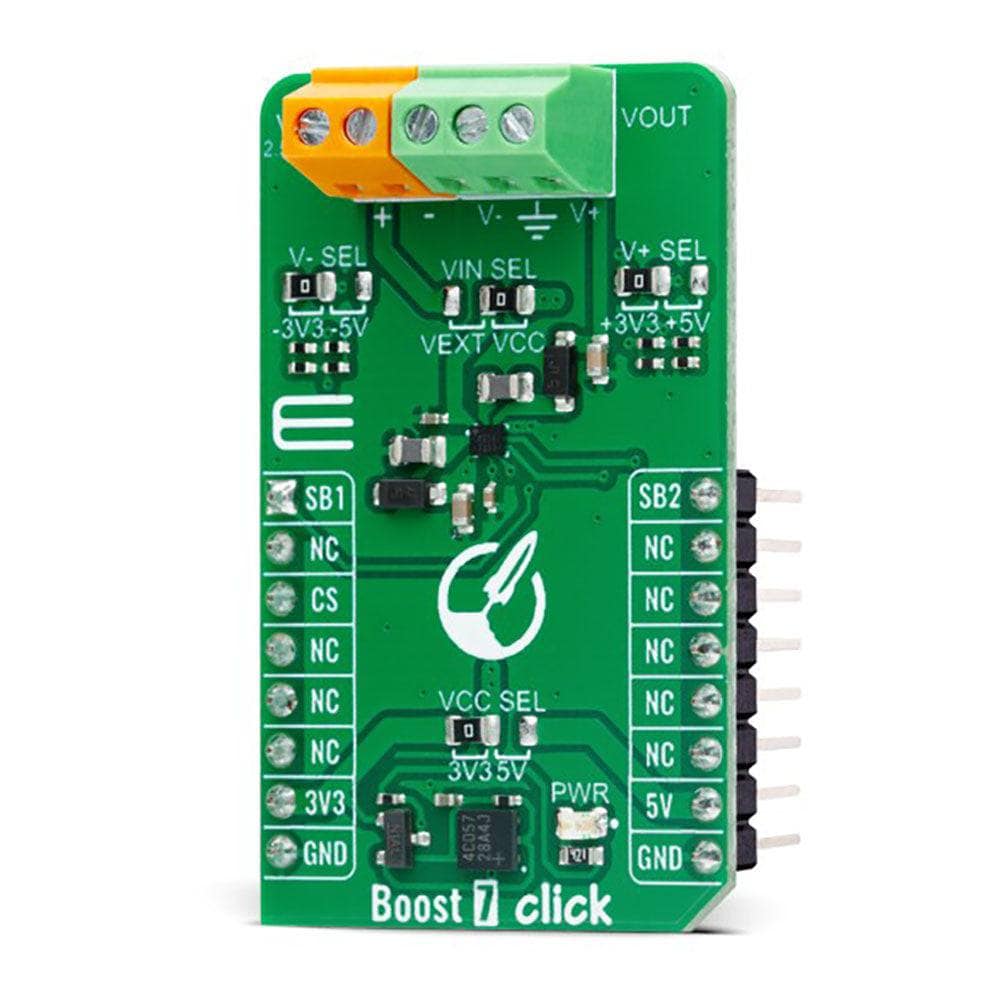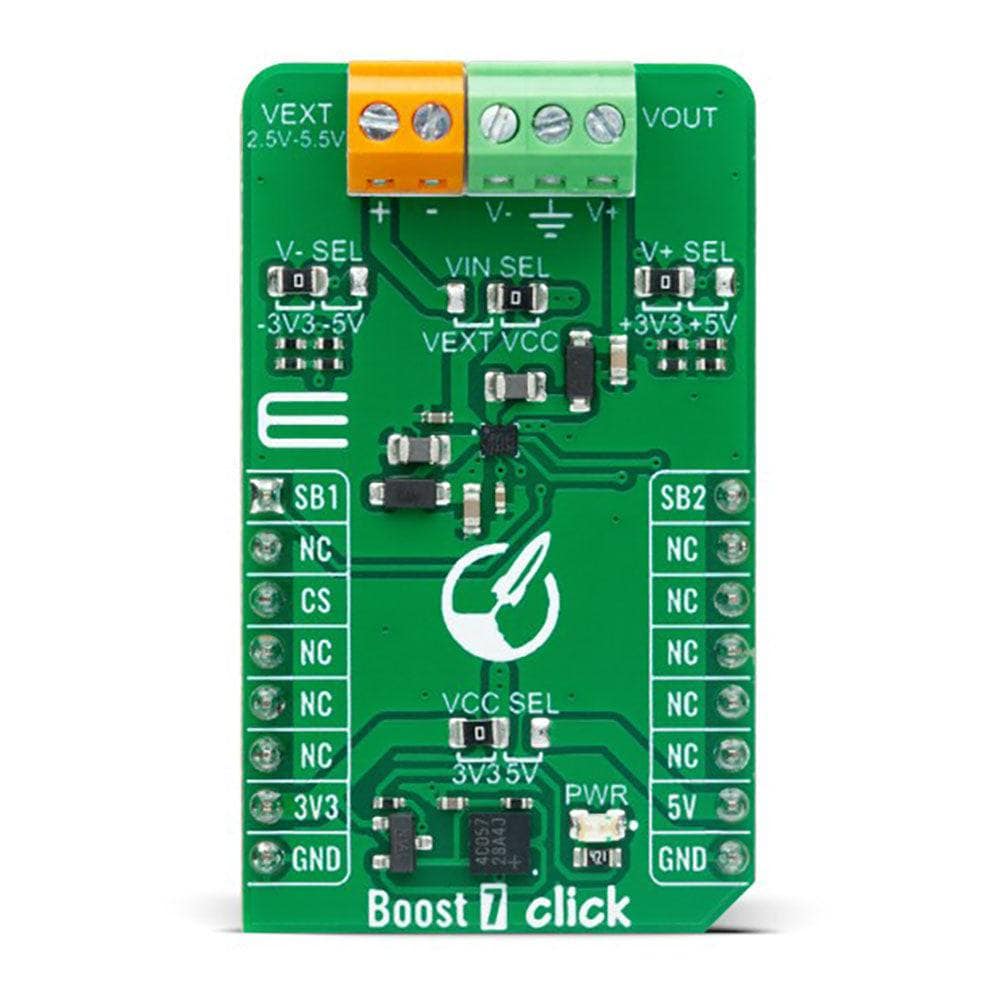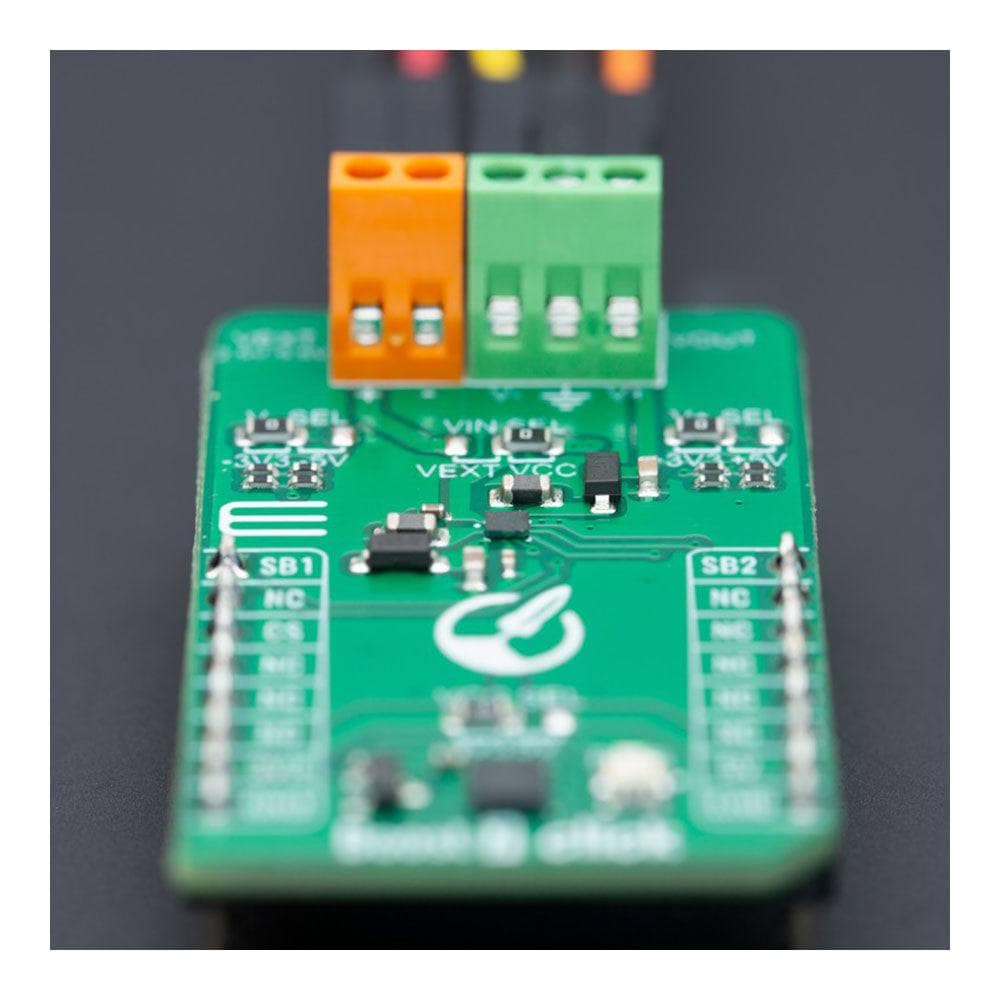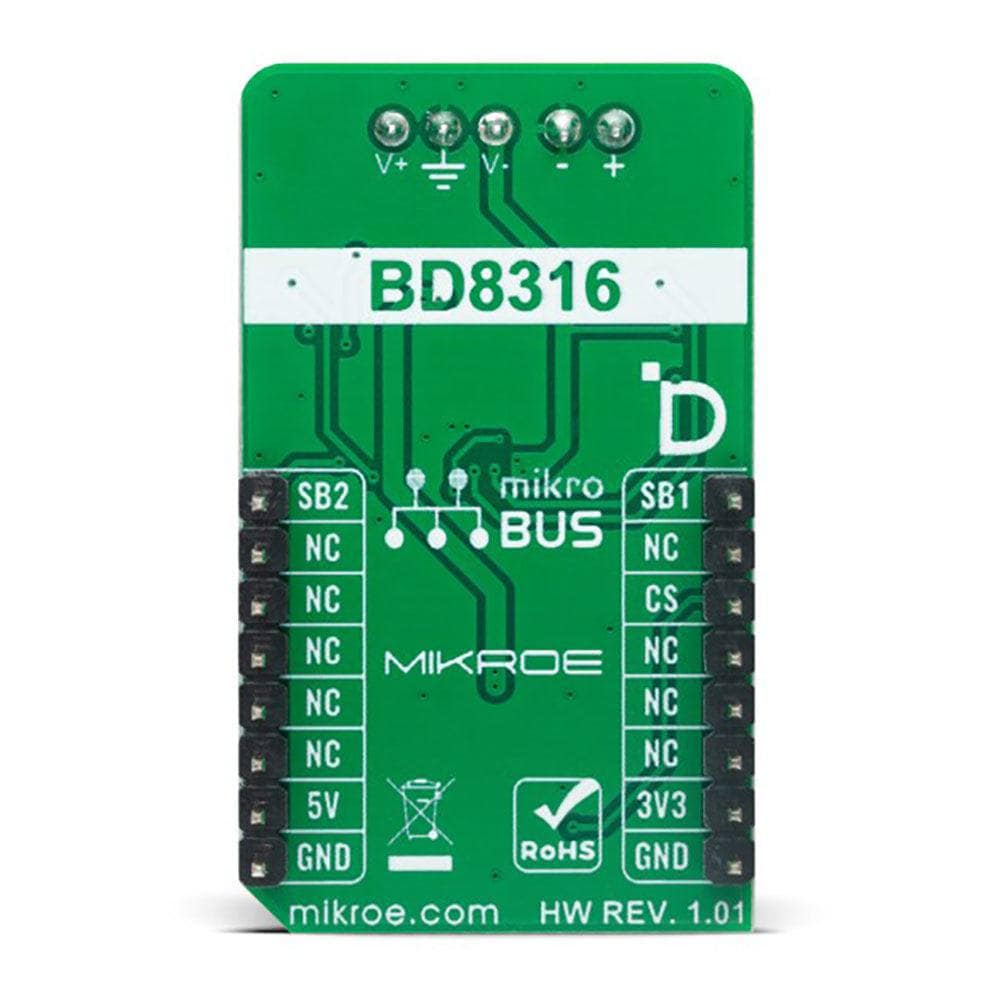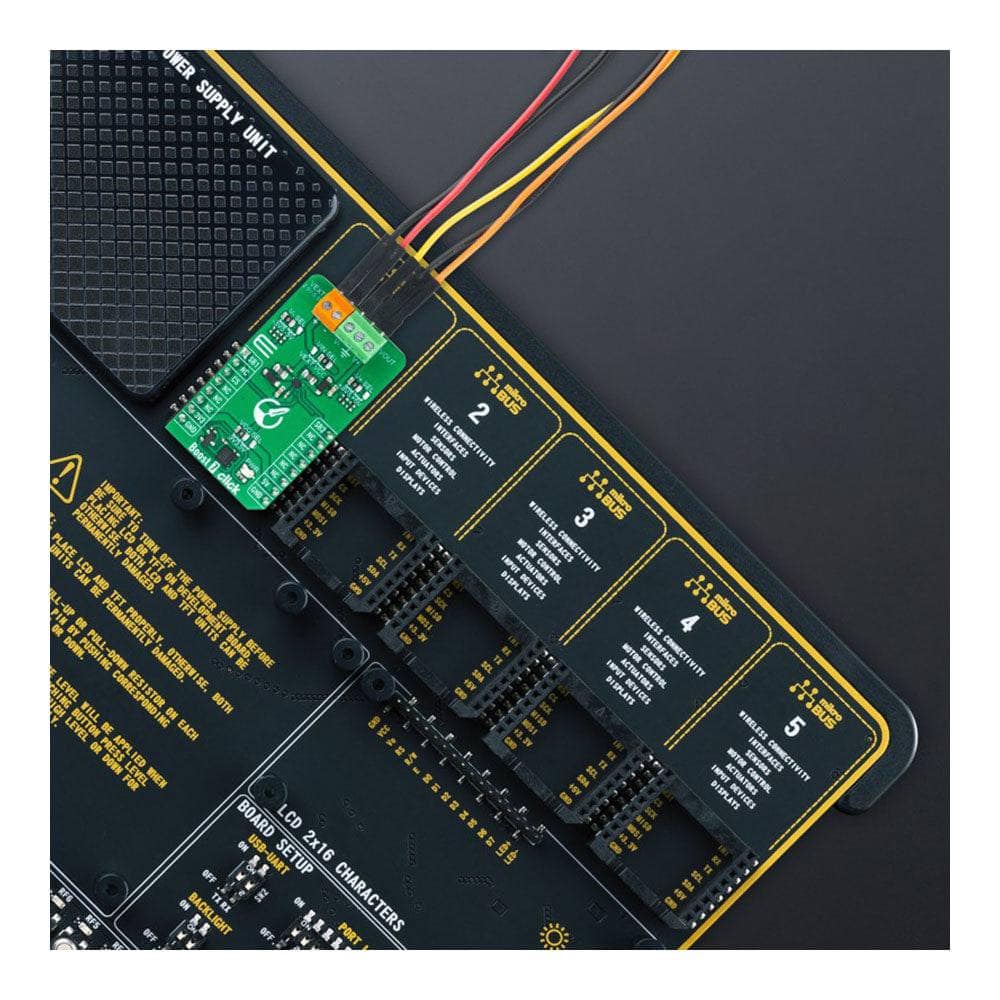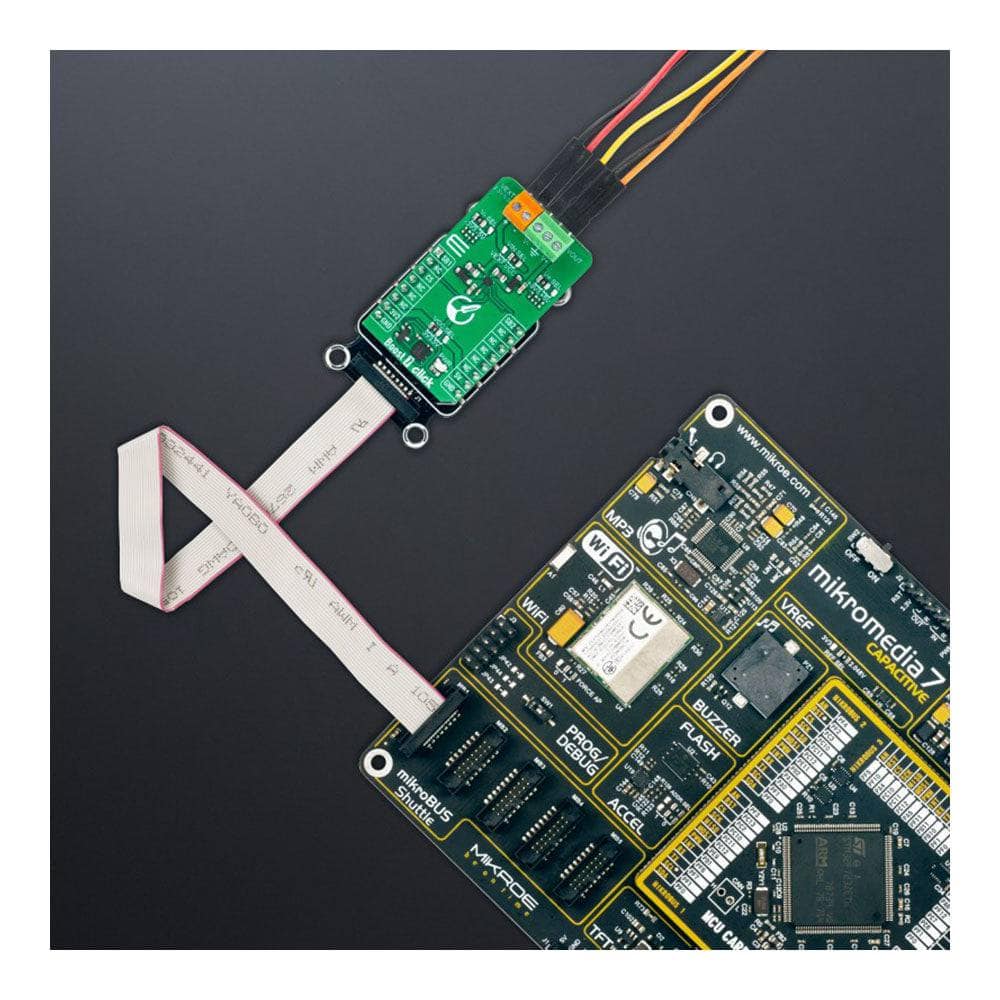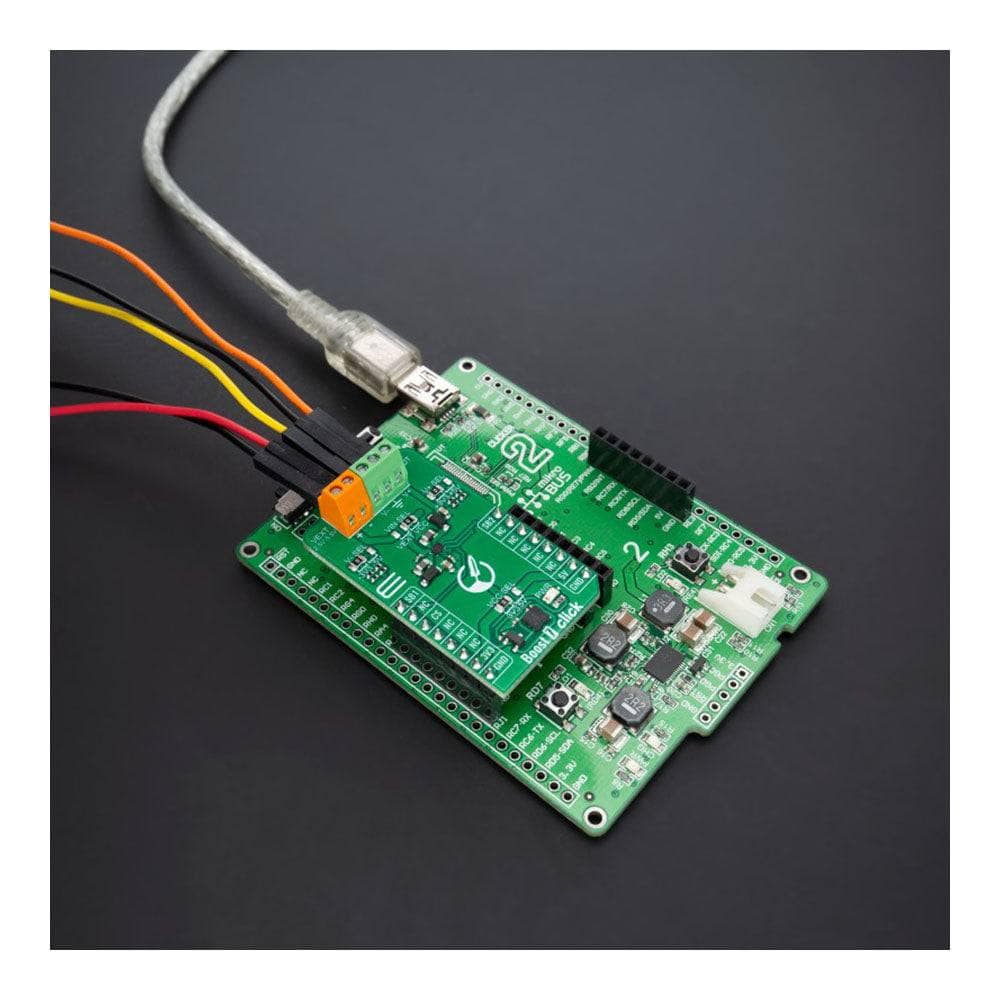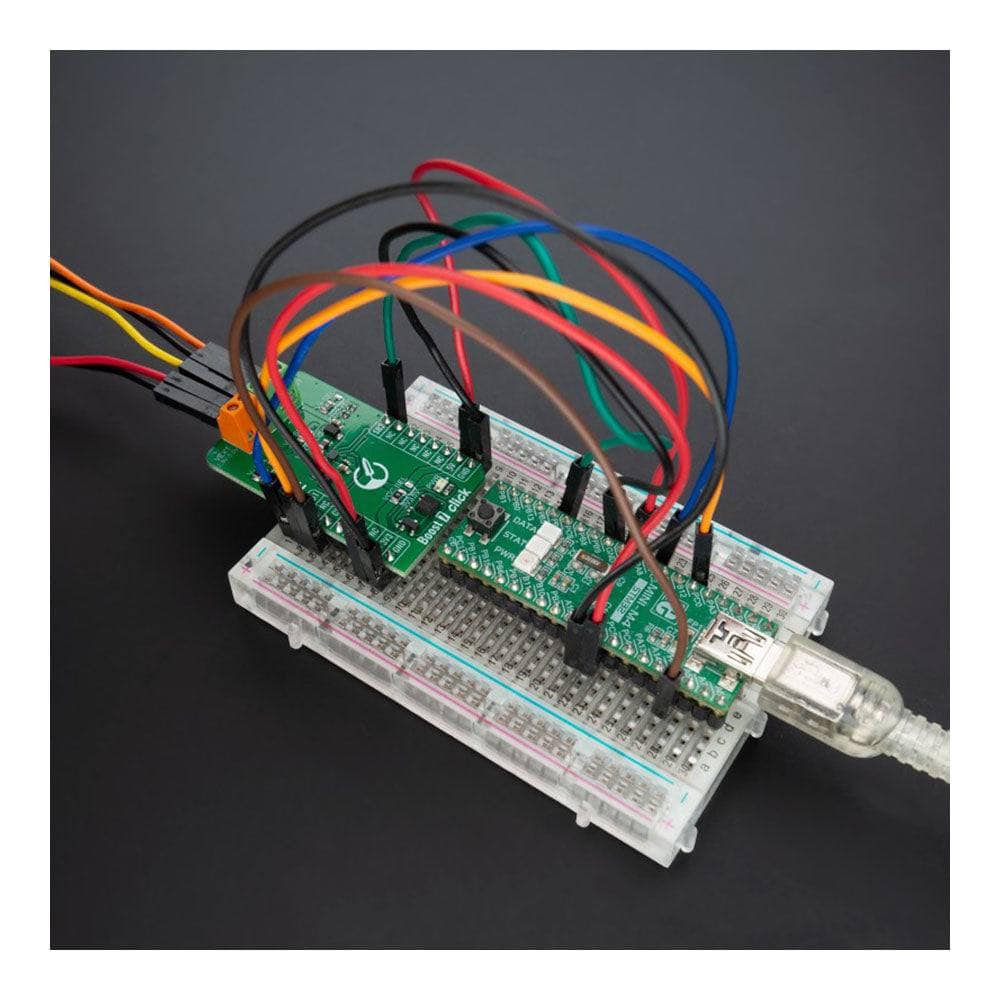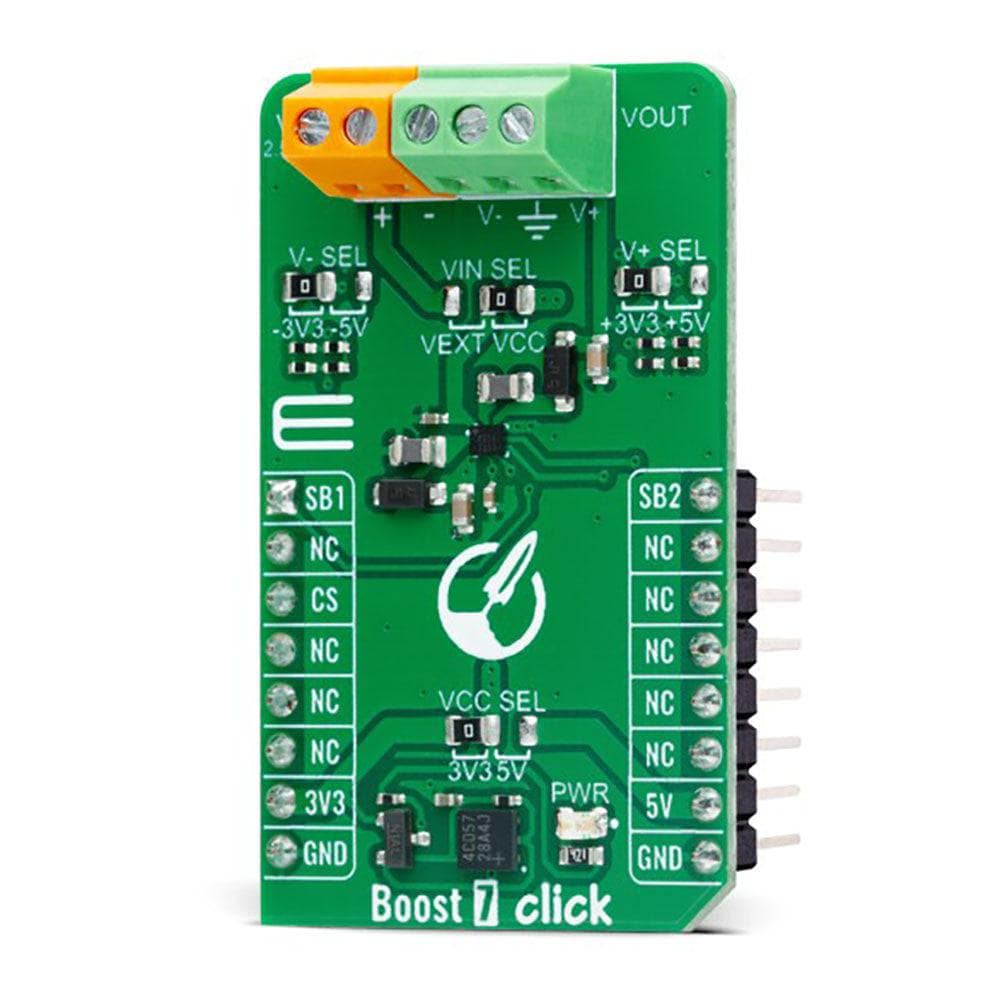
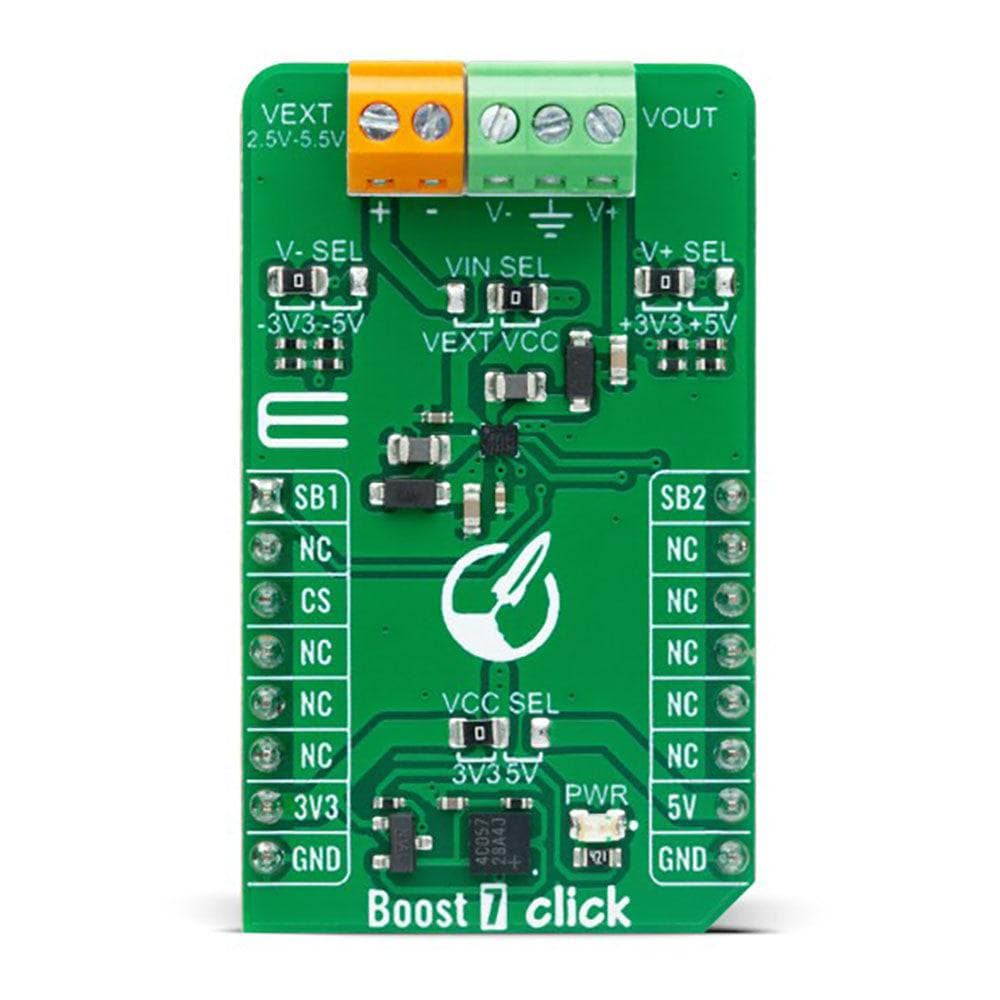
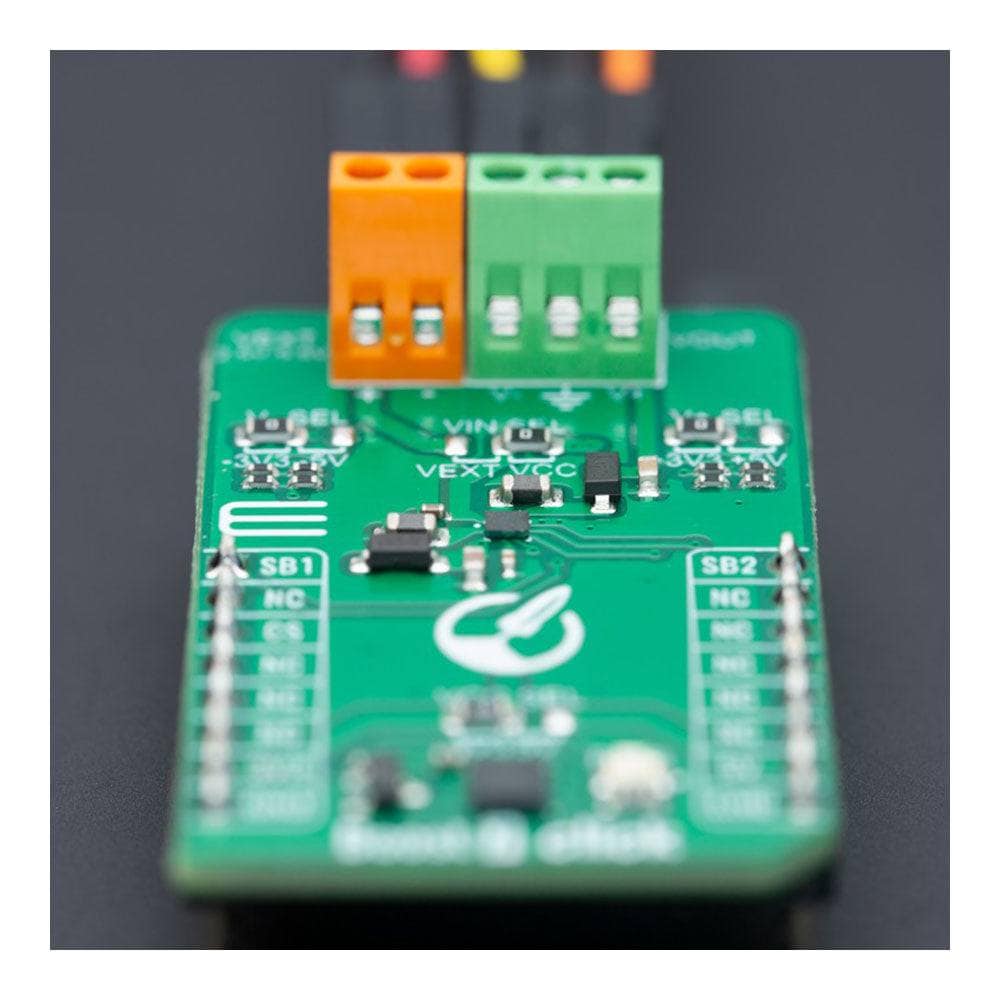
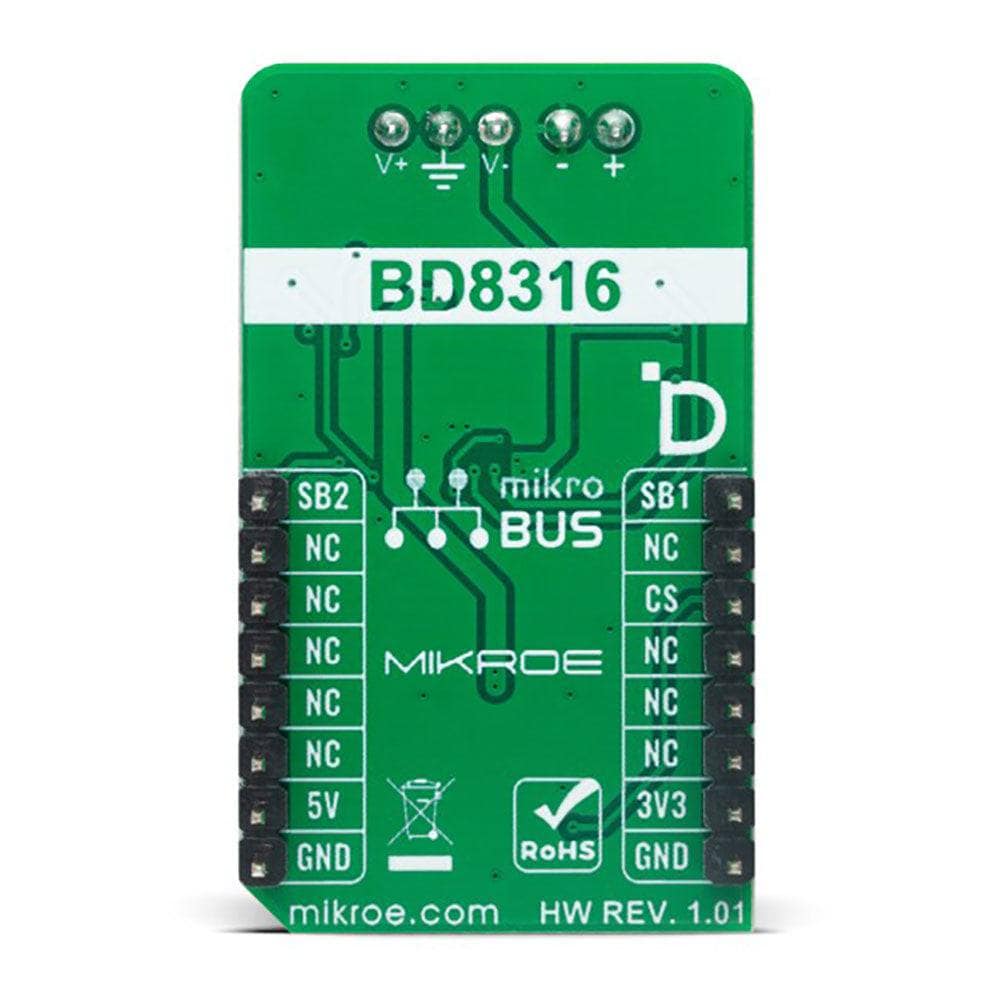
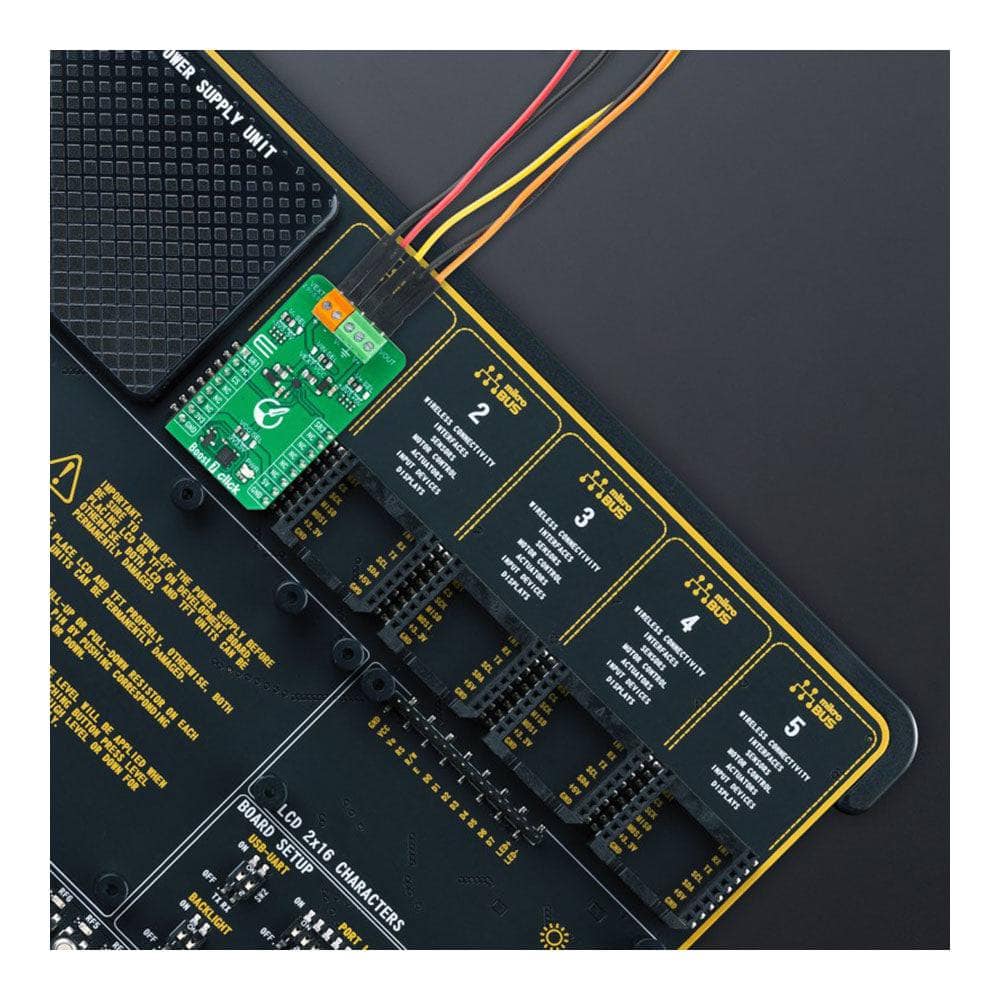
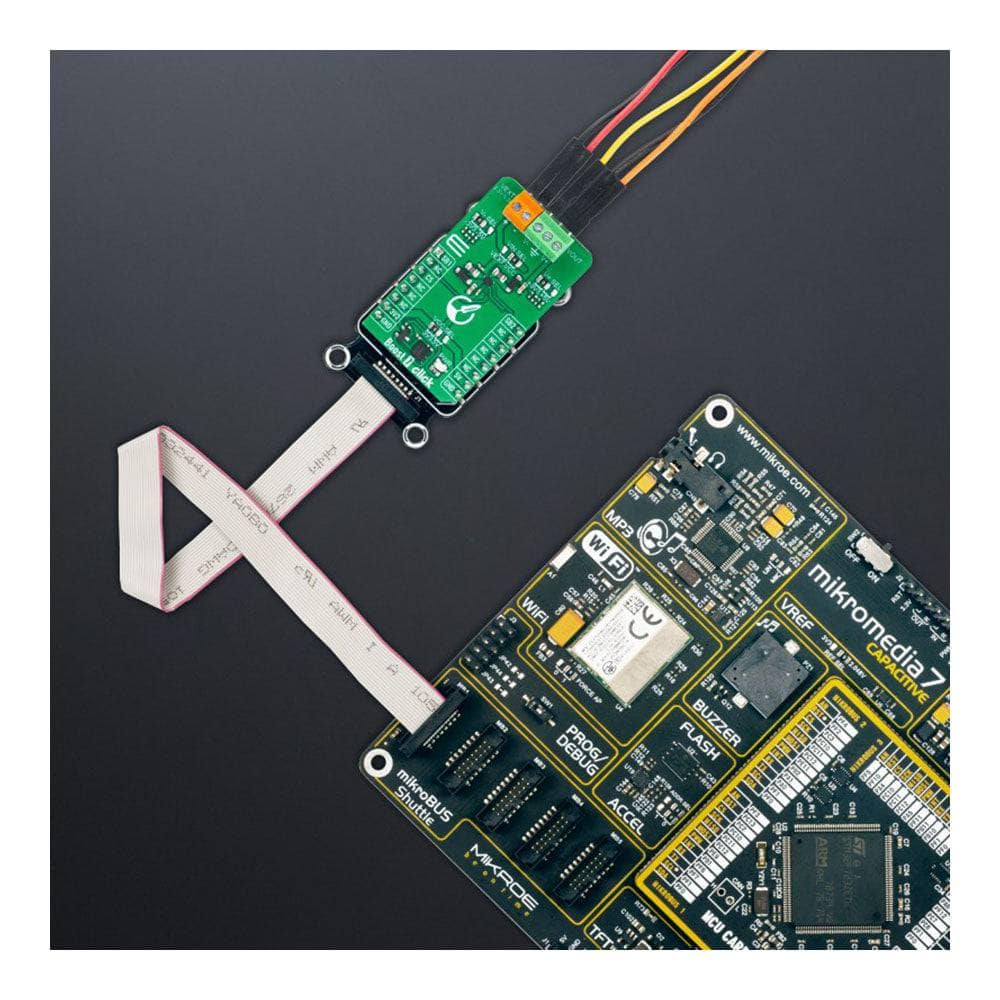
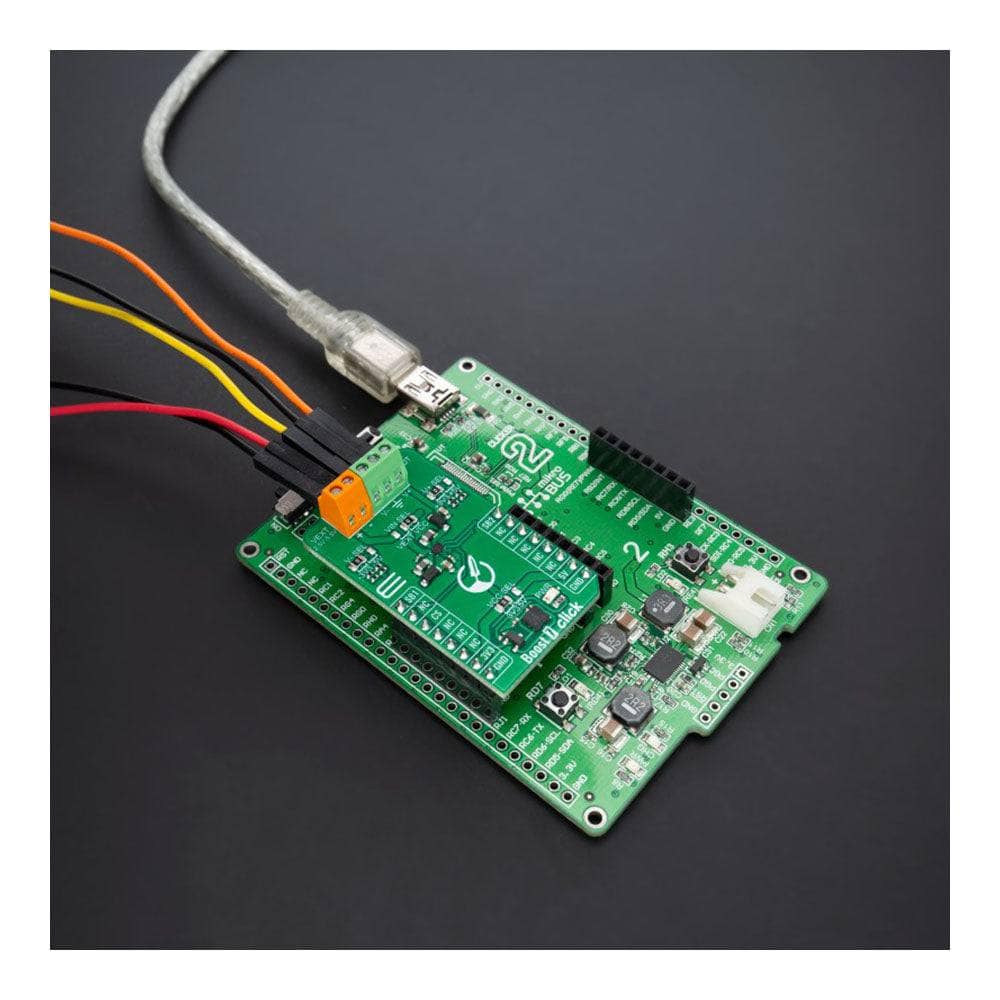
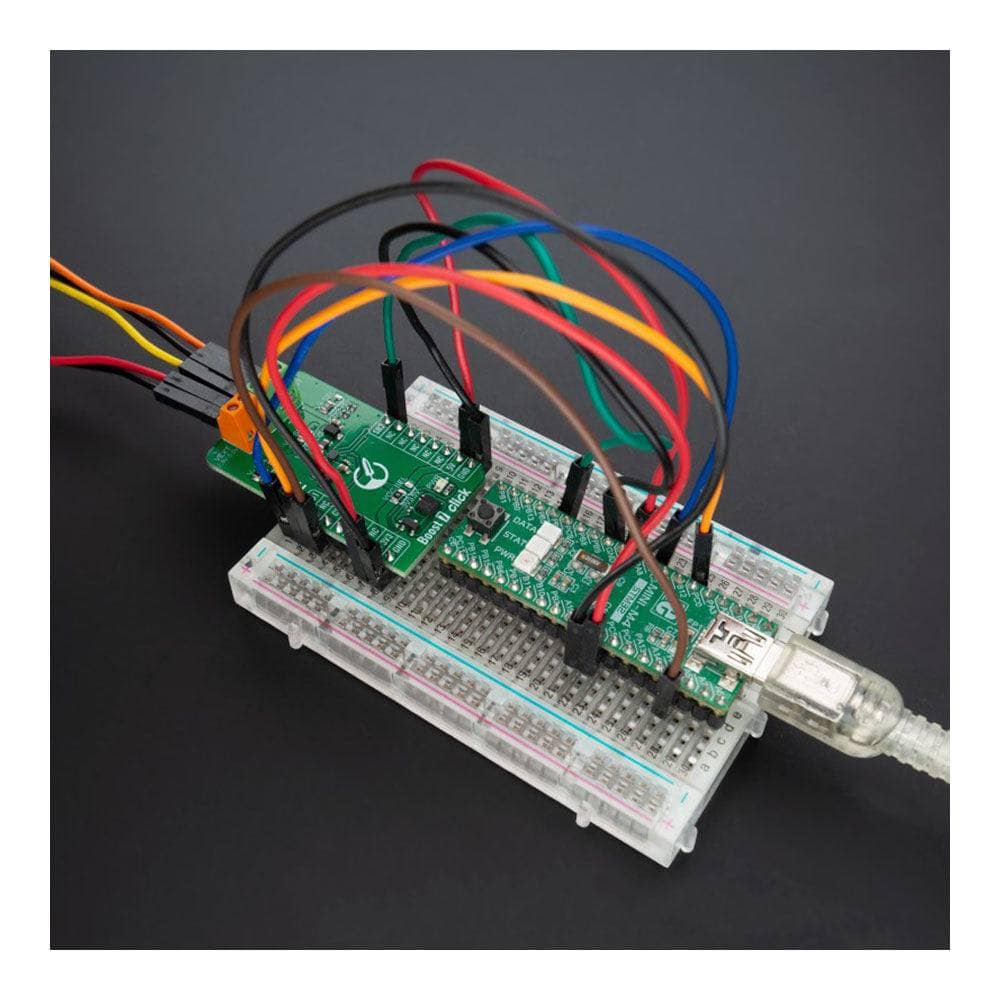
Key Features
Overview
Boost Your Voltage with the Boost 7 Click Board™
Looking to step up the voltage for your load? Look no further than the Boost 7 Click Board™, the compact add-on board that delivers reliable voltage regulation for a range of applications.
Powerful Performance, Minimal Footprint
Featuring the advanced BD8316GWL dual DC/DC converter from Rohm Semiconductor, the Boost 7 Click Board™ is designed to provide up to 200mA current limit and generate well-regulated positive and negative outputs of ±3.3V or ±5V. This makes it ideal for a wide range of applications that require split rail operating voltages.
Versatile Compatibility
The Boost 7 Click Board™ is compatible with both mikroBUS™ power rails and also supports external power supply with a very low voltage of 2.5V. This gives you the flexibility you need to power your load no matter where you are.
Simplified Software Development
With the mikroSDK-compliant library, software development for the Boost 7 Click Board™ has never been easier. Our library includes functions that simplify software development, so you can get up and running quickly and easily.
Ready to Use
The Boost 7 Click Board™ comes fully tested and ready to use on any system equipped with the mikroBUS™ socket. So why wait? Boost your voltage and power up your applications with the Boost 7 Click Board™ today!Downloads
Steigern Sie Ihre Spannung mit dem Boost 7 Click Board™
Möchten Sie die Spannung für Ihre Last erhöhen? Dann sind Sie mit dem Boost 7 Click Board™ genau richtig. Das kompakte Zusatzboard bietet zuverlässige Spannungsregelung für zahlreiche Anwendungen.
Starke Leistung, minimaler Platzbedarf
Das Boost 7 Click Board™ ist mit dem fortschrittlichen dualen DC/DC-Wandler BD8316GWL von Rohm Semiconductor ausgestattet und bietet eine Strombegrenzung von bis zu 200 mA sowie gut geregelte positive und negative Ausgänge von ±3,3 V oder ±5 V. Dadurch eignet es sich ideal für eine Vielzahl von Anwendungen, die Split-Rail-Betriebsspannungen erfordern.
Vielseitige Kompatibilität
Das Boost 7 Click Board™ ist mit beiden mikroBUS™-Stromschienen kompatibel und unterstützt auch eine externe Stromversorgung mit einer sehr niedrigen Spannung von 2,5 V. Dies gibt Ihnen die Flexibilität, die Sie brauchen, um Ihre Last mit Strom zu versorgen, egal wo Sie sind.
Vereinfachte Softwareentwicklung
Mit der mikroSDK-kompatiblen Bibliothek war die Softwareentwicklung für das Boost 7 Click Board™ noch nie so einfach. Unsere Bibliothek enthält Funktionen, die die Softwareentwicklung vereinfachen, sodass Sie schnell und einfach loslegen können.
Sofort einsatzbereit
Das Boost 7 Click Board™ wird vollständig getestet und ist einsatzbereit auf jedem System, das mit der mikroBUS™-Buchse ausgestattet ist. Worauf also warten? Steigern Sie Ihre Spannung und bringen Sie Ihre Anwendungen noch heute mit dem Boost 7 Click Board™ auf Touren!| General Information | |
|---|---|
Part Number (SKU) |
MIKROE-5575
|
Manufacturer |
|
| Physical and Mechanical | |
Weight |
0.02 kg
|
| Other | |
Country of Origin |
|
HS Code Customs Tariff code
|
|
EAN |
8606027385599
|
Warranty |
|
Frequently Asked Questions
Have a Question?
-
Is the Boost 7 Click Board™ ready to use?
Yes, the Boost 7 Click Board™ comes as a fully tested product, ready to be used on a system equipped with the mikroBUS™ socket.
-
What is the mikroSDK-compliant library for the Boost 7 Click Board™?
The Boost 7 Click Board™ is supported by a mikroSDK-compliant library, which includes functions that simplify software development.
-
What are the applications of the Boost 7 Click Board™?
The Boost 7 Click Board™ is used to step up an input voltage to some higher level required by a load, for various applications that require "split rail" operating voltages.
-
What is the voltage range of the external power supply that can be used with the Boost 7 Click Board™?
The Boost 7 Click Board™ provides the opportunity of using an external power supply with a very low voltage of 2.5V.
-
What is the current limit of each converter inside the BD8316GWL?
Each converter inside the BD8316GWL is designed with up to 200mA current limit.
-
What is the Boost 7 Click Board™?
The Boost 7 Click Board™ is an add-on board that steps up the voltage from its input (supply) to its output (load). It features the BD8316GWL, a dual DC/DC converter from Rohm Semiconductor, which is designed to generate well-regulated positive and negative outputs of ±3.3V or ±5V.

